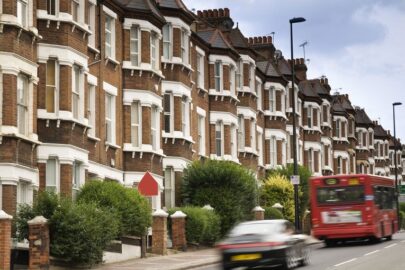The UK housing market remains “alive and active”, according to analysis of the UK housing market by national estate agent, Jackson-Stops & Staff.
The analysis, which is based on a daily sample of over 500,000 actual properties for sale in the UK over the last three months, does not suggest a housing market crash has occurred post Brexit, however in London stamp duty is having a significant effect on properties priced upwards of £2 million.
The number of properties on the market in the UK has risen by 1.0% over the last three months (mid-June to mid-September).
The number of properties under agreed offer (including sold subject to contract) has fallen by 2.5%. Of the approximate 320,000 UK properties with an agreed offer, this percentage reduction represents a total of 8,000 fewer properties. Under Agreed Offer properties now represent 36.1% of all properties on the market, down from 39.4% in mid-June before Brexit,
The above weaker transactional data has resulted in the national average asking price of properties on the market falling by 2.0% (from £297,508 in mid-June, to £291,547 in mid-September).
Nick Leeming, chairman at Jackson-Stops & Staff, said: “Three months after the UK’s historic vote to leave the EU, the property market remains alive and active. There are more properties on the market today than on the day of the Brexit vote, and there has only been a marginal decline in the number of properties under offer. House prices have also declined only moderately.
“The normal events – families growing, the desire to downsize, a new job, a change of lifestyle – the fundamental drivers for people buying and selling property, have remained unchanged.”
While the general UK market has weakened only slightly since the Brexit vote, London has seen asking prices 3% down from mid-June. In London, the average median asking price for all properties on the market is now £537,639, down from £554,267 in mid-June. Properties priced below £1 million are still seeing high levels of interest, however with a smaller number of homes coming to market, competition among buyers who need to move is increasing, especially in locations outsize of zones one and two, where the majority of buyers tend to be families or young professionals.
Of all of the properties on the market in London with asking prices above £2 million, only 7% are under agreed offer. This compares to 28% for all London properties.
London’s top end has suffered more than average with the proportion of agreed offers being over five times less than rest of the UK. The market above £2 million has log jammed, but not as a result of the Brexit. Despite the fall in the Pound being attractive for foreign investors, the very high stamp duty for second home investors has dampened agreed sales – a trend that was occurring before the Brexit vote.
Leeming added: “London has always been an island when it comes to the housing market and is governed by a range of forces that are not as strongly at play across the rest of the UK, such as significant international investment and high net worth buyers. The fact that there is a freeze around the higher value properties in the capital is due to a number of factors, not just confidence levels following the Brexit vote, but also the impact of Stamp Duty at the very highest levels. Stamp duty amounts to £213,750 for a £2 million priced property (assuming it’s a second home) which doesn’t offer a great motive to buyers.
“Our outer London branches in locations such as Wimbledon, Richmond, Teddington and Weybridge are continuing to see high levels of demand, especially among families and young professionals, showing that this market remains active. This reduction in confidence therefore appears to be confined to the highest echelons with properties priced in the lower bands seeing substantially more interest. We anticipate that the market will correct itself as we head into the final quarter of this year.”
